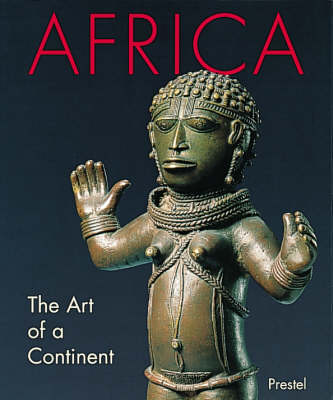African, Asian & Oceanic Art S.
2 total works
This volume provides a global vision of the art of Africa through a host of colourful images of the finest known objects from the continent's cultural heritage. It examines African art geographically in a "grand tour" that divides the continent into seven areas. Beginning with ancient Egypt and Nubia, it moves down the eastern coast through Ethiopia and the Sudan - including the island of Madagascar - to Southern Africa, then up through the Congo and Central Africa to the Guinea Coast and the countries of the Sahara. Finally, it moves to North Africa, before returning to Egypt in its later Christian and Islamic periods. Within each of these seven chapters, objects are illustrated in chronological order, demonstrating the extraordinary range of styles inspired by different religions and cultures realized in a variety of materials from dung to gold. The artifacts comprise ornaments and jewellery, textiles, snuff bottles, Tutsi basketry from Rwanda, and sculpture, including the finest bronzes, terracottas and wood carvings from all periods.
The book details the archaeological, historical and cultural background of every illustrated object and relates individual pieces to the people who made them. From ancient Egypt comes the Battleground Palette from 5000 B.C. This ceremonial palette depicts a battle on one side and an elegantly carved scene of grazing animals on the other. The book pictures a lyre from the southern Sudan that is over three feet high and profusely decorated with coins, beads, and shells. Also included is the oldest human artifact found on Earth - a handmade stone tool 1.6 million years old from Olduvai Gorge in Tanzania. If the scope of the book spans a whole continent, the source of the objects is transcontinental. Works of art from the finest public and private collections in Europe, America and the rest of the world are juxtaposed with the best from Africa itself. This book is published to coincide with "Africa 95", the first nationwide celebration of the arts of Africa ever to be held in Great Britain. Patrons of "Africa 95" are Her Majesty The Queen, President Nelson Mandela, and President Leopold Sedar Senghor.
As the birthplace of the human race, Africa has a cultural history of unparalleled length; the book reflects this vast time span and the diversity of the art of the continent. Contributors to this book include Tom Phillips, John Mack, Anthony Appiah, Daniel Biebuyck, Rene Bravmann, Patricia Davison, Nadia Erzini, Peter Garlake, John Picton, Edna R. Russman, Wole Soyinka, Laslo Torok, Rachel Ward and Cornel West.
The book details the archaeological, historical and cultural background of every illustrated object and relates individual pieces to the people who made them. From ancient Egypt comes the Battleground Palette from 5000 B.C. This ceremonial palette depicts a battle on one side and an elegantly carved scene of grazing animals on the other. The book pictures a lyre from the southern Sudan that is over three feet high and profusely decorated with coins, beads, and shells. Also included is the oldest human artifact found on Earth - a handmade stone tool 1.6 million years old from Olduvai Gorge in Tanzania. If the scope of the book spans a whole continent, the source of the objects is transcontinental. Works of art from the finest public and private collections in Europe, America and the rest of the world are juxtaposed with the best from Africa itself. This book is published to coincide with "Africa 95", the first nationwide celebration of the arts of Africa ever to be held in Great Britain. Patrons of "Africa 95" are Her Majesty The Queen, President Nelson Mandela, and President Leopold Sedar Senghor.
As the birthplace of the human race, Africa has a cultural history of unparalleled length; the book reflects this vast time span and the diversity of the art of the continent. Contributors to this book include Tom Phillips, John Mack, Anthony Appiah, Daniel Biebuyck, Rene Bravmann, Patricia Davison, Nadia Erzini, Peter Garlake, John Picton, Edna R. Russman, Wole Soyinka, Laslo Torok, Rachel Ward and Cornel West.
Focusing on the art of a single Rajasthani kingdom, founded during the early 17th century, this text investigates in detail its political, religious, and cultural context. Providing an in-depth examination of Kotah and its rulers it highlights some 70 paintings and 10 items of royal regalia from the Kotah royal collection, including images of the gods (especially Krishna, the deity of the royal family and kingdom), and pictures of festivals and ceremonies. Scenes of Kotah Fort and day-to-day activities are also shown, with vivid depictions of royal tiger hunts, which have often been conmpared with paintings by Henri Rousseau. Five essays on the art and history of Kotah, as well as entries on the individual works, are included in this volume, cataloguing an exhibition that will travel in North America and Europe. An art-historical introduction describes the forces that shaped the Kotah style and especially the oeuvre of the recently identified Kotah Master. Other subjects include the interrelation of paintings, poetry, and devotional practice; the techniques and materials employed by Kotah painters; and discussions of subject matter, dating, and artistic skills.
The book is published to coincide with the 50th anniversary of Indian independence.
The book is published to coincide with the 50th anniversary of Indian independence.

